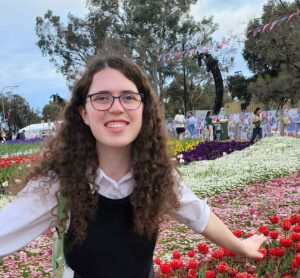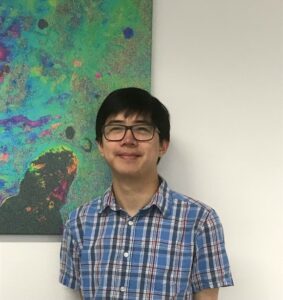Undergraduate students spent the summer with CSIRO Centre for Earth Observation
The CSIRO Centre for Earth Observation (CCEO) hosted two Undergraduate Vacation Scholars over the summer of 2024/2025. These prestigious, highly sought-after scholarships take place during the Australian university summer holidays and provide high achieving and talented undergraduate students with the chance to work alongside leading CSIRO scientists in tackling problems affecting the nation.

Alexandra Vickery
Alexandra Vickery spent the summer working with SWOT satellite data.
Alexandra Vickery joined the Satellite Calibration and Validation (Cal/Val) Facilities team, to work alongside Dr Matt Garthwaite at Black Mountain. Pursuing an Honours degree in a Bachelor of Philosophy (Science) with a specialisation in ‘Physics of the Earth’, Alexandra is due to graduate from the Australian National University in Canberra at the end of 2025. During her time with the CCEO, Alexandra worked on validating water height measurements from the innovative Surface Water and Ocean Topography (SWOT) satellite mission, launched by NASA and French space agency, CNES, in 2023.
Alexandra’s project used GNSS data collected during 2024 from a CSIRO-operated pontoon on the Googong Reservoir in New South Wales – the Darkwater Inland Observatory Network (DION). Firstly assessing the quality of the GNSS data, Alexandra found it to give water height accuracy of less than two centimeters, making it highly suitable for satellite validation purposes. Alexandra then compiled the available SWOT satellite data over the test site and conducted a statistical analysis to assess the accuracy of the satellite measurements. She found that two of the three SWOT products, once filtered enough, produced heights accurate to less than ten centimeters.
“In a country where knowledge of water resources is so important, the SWOT satellite could become crucial in improving our understanding of how water flows across the continent’s surface. I have really enjoyed learning more about remote measurements of water from space” said Alexandra.

Raymond Trinh worked on the Darkwater Inland Observatory Network
Raymond Trinh worked with Andy Allen at Black Mountain within the CCEO’s Cal/Val Facilities team, alongside the CSIRO Environment Aquatic Remote Sensing team, who implemented the Googong site as an Earth observation satellite Cal/Val site as part of the DION project.
A fourth-year Aerospace Engineering and Physics student at the University of Sydney, Raymond’s project involved the development of engineering documentation to record both the design intent and the final as-built design of this important research infrastructure, ensuring the longevity and repeatability of the work. Raymond reviewed the existing design information and records, and interviewed the DION team to gain an understanding of the site’s scientific goals, learn about the development process, and identify the details of the final implemented design. Raymond then developed User Needs and Functional Performance requirements to articulate the design intent, as well as a System Design Document to detail what has been built at the site.
“It is becoming increasingly important to build confidence in the quality of Earth observation data”, said Raymond. “Contributing to these efforts with such a dedicated team has been an exciting experience”.
On behalf of everyone at the CCEO, we would like to thank both Alexandra and Raymond for their fantastic work on these important projects, and we wish them all the very best in their future studies and career!
